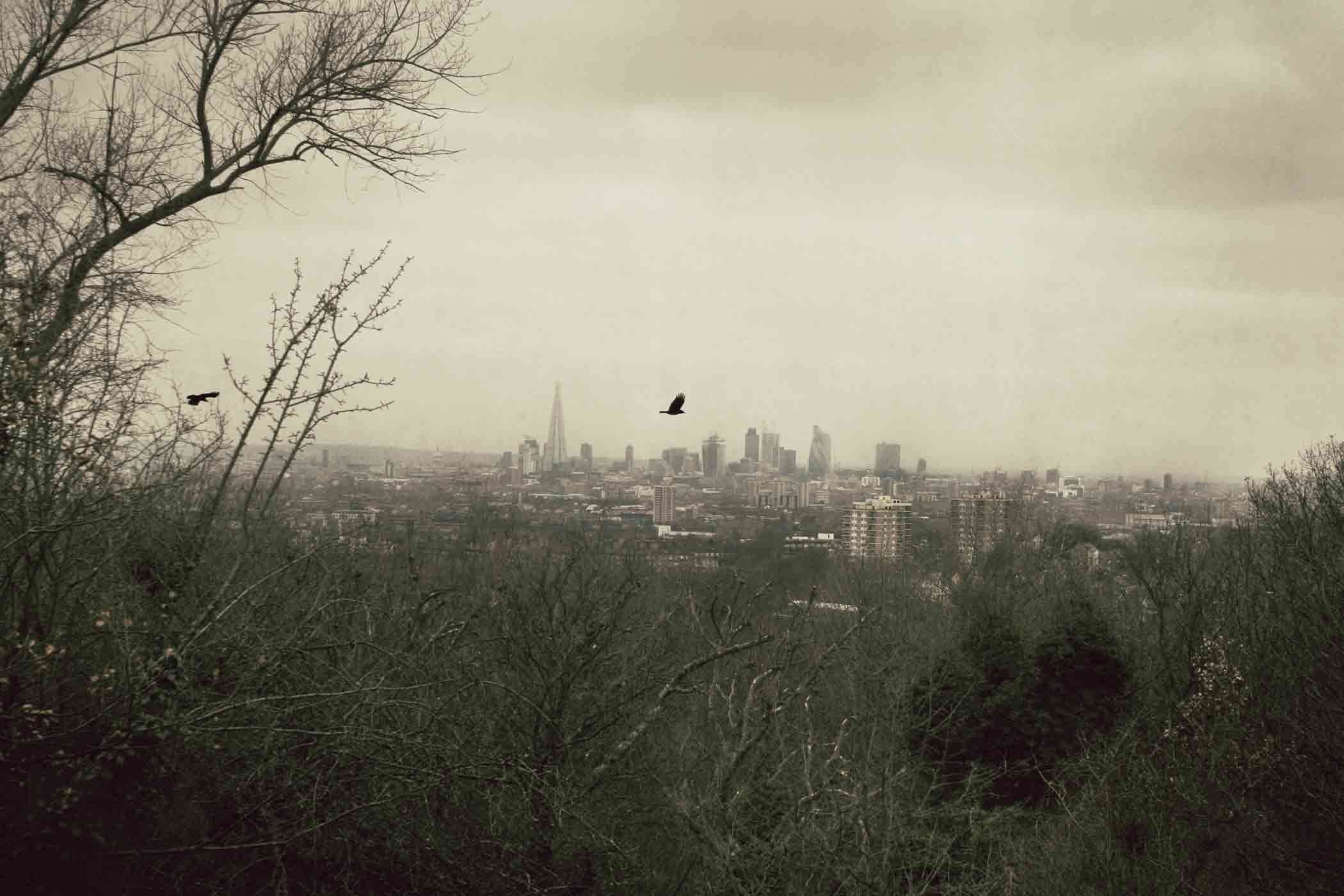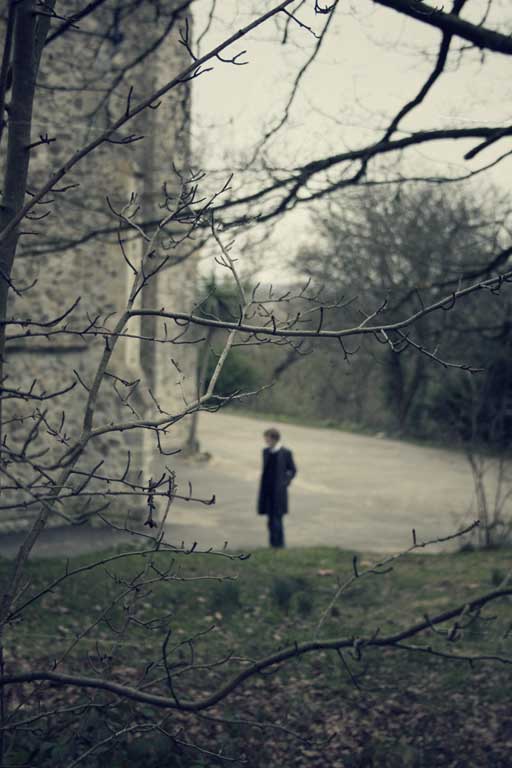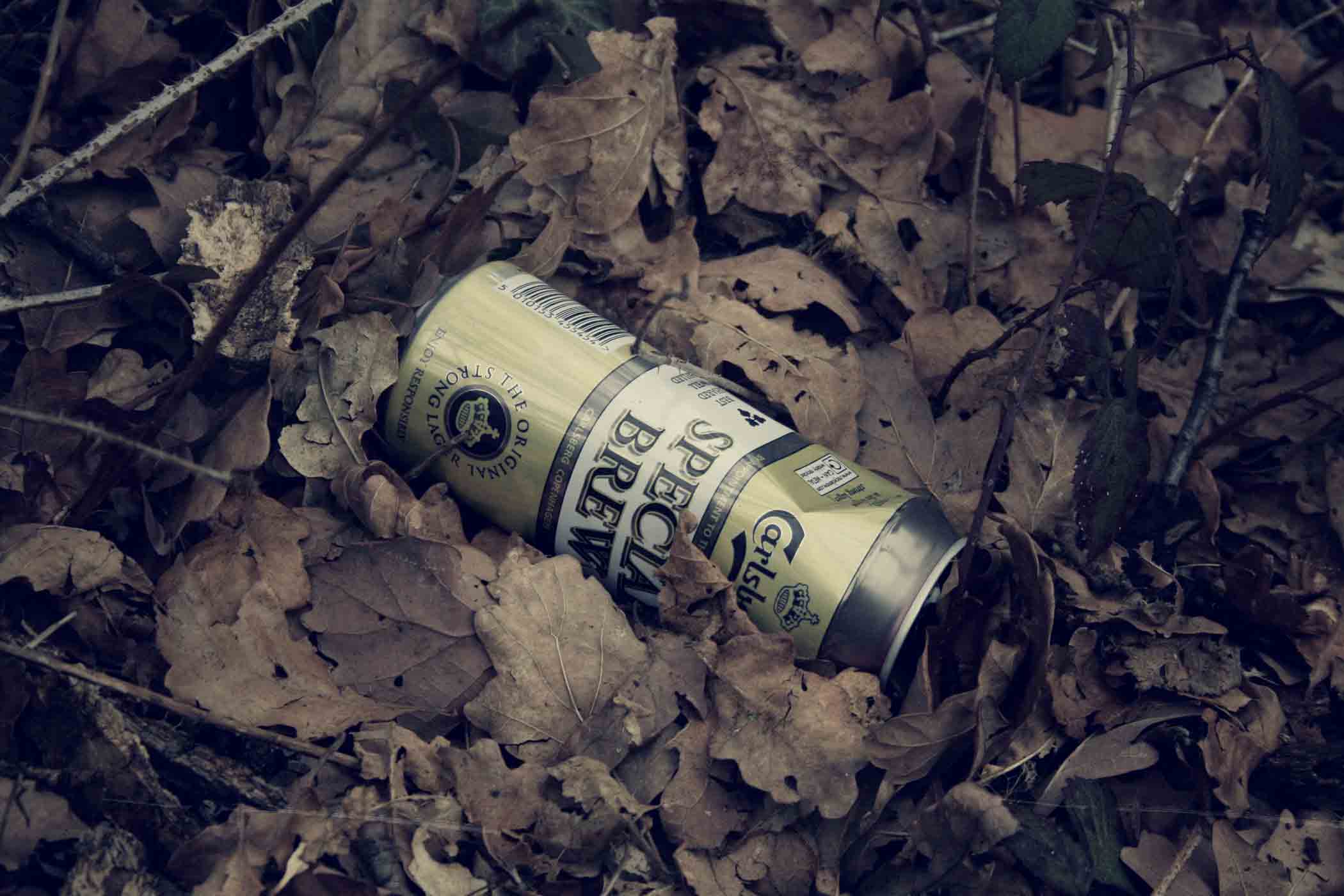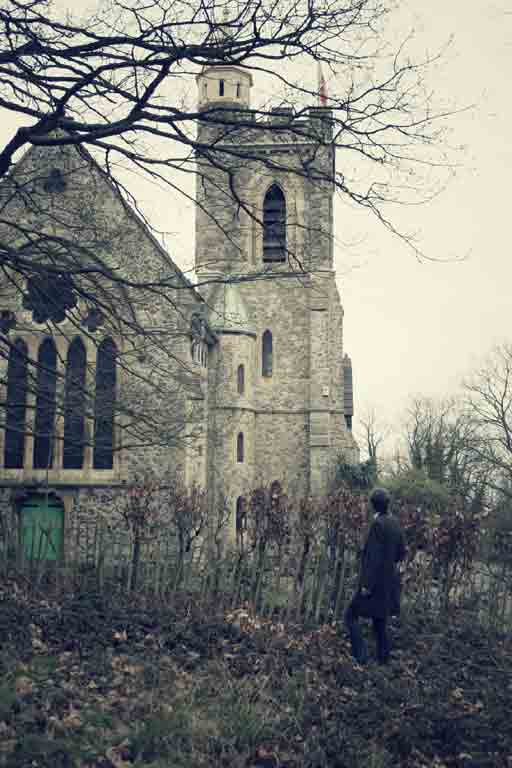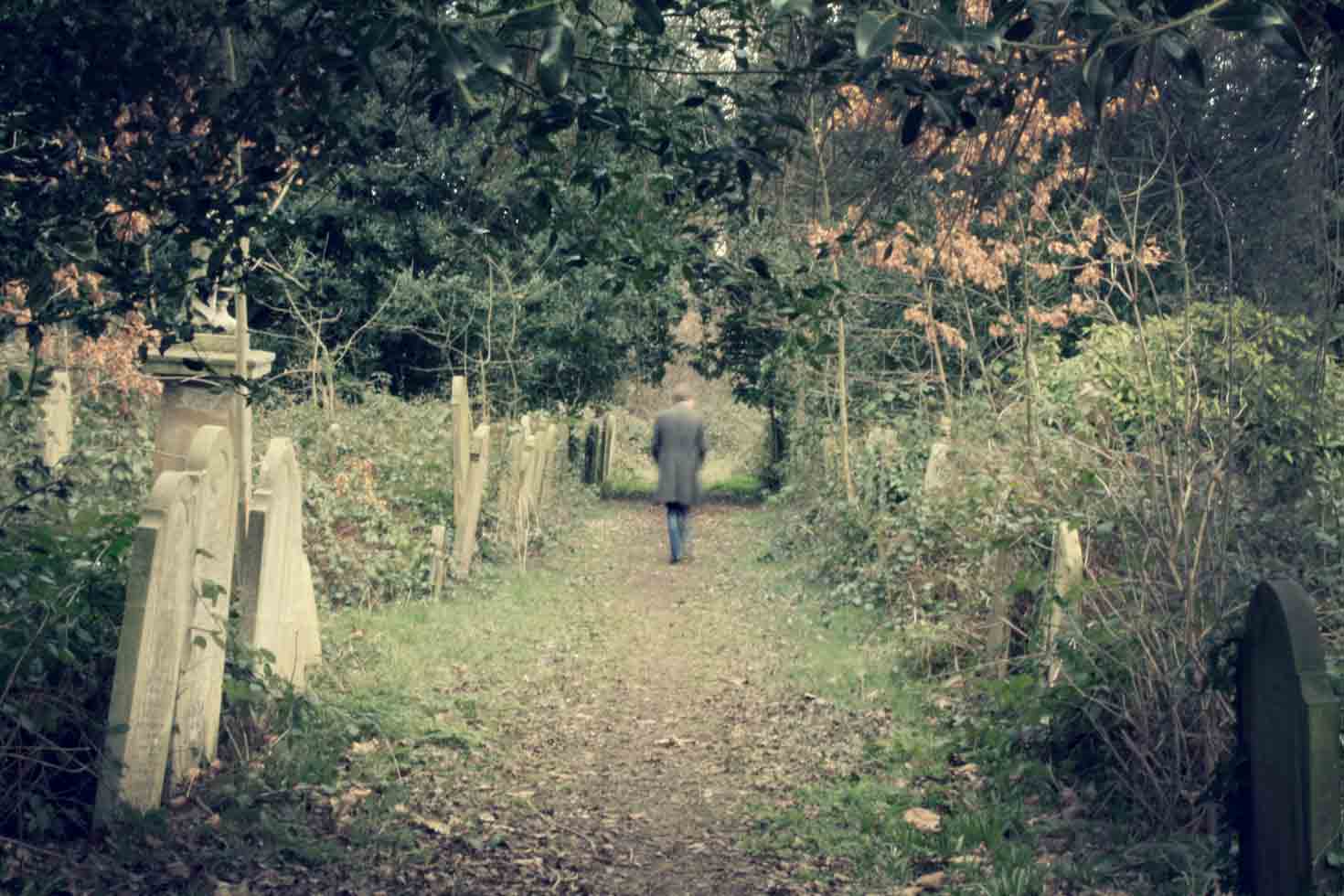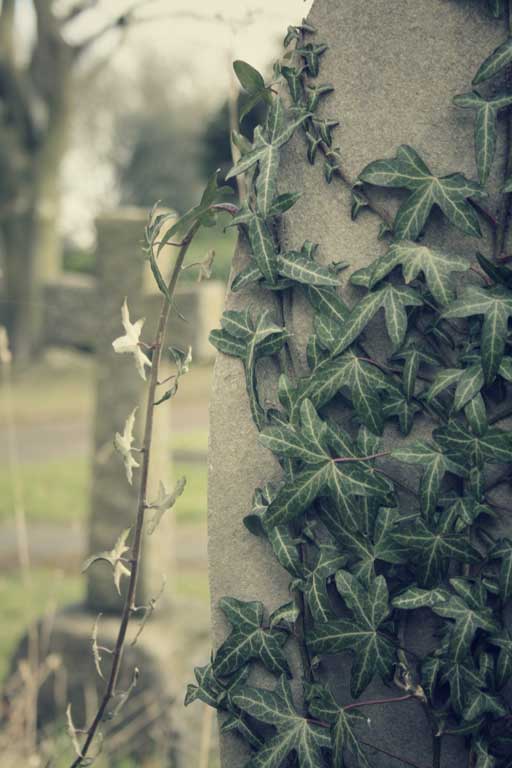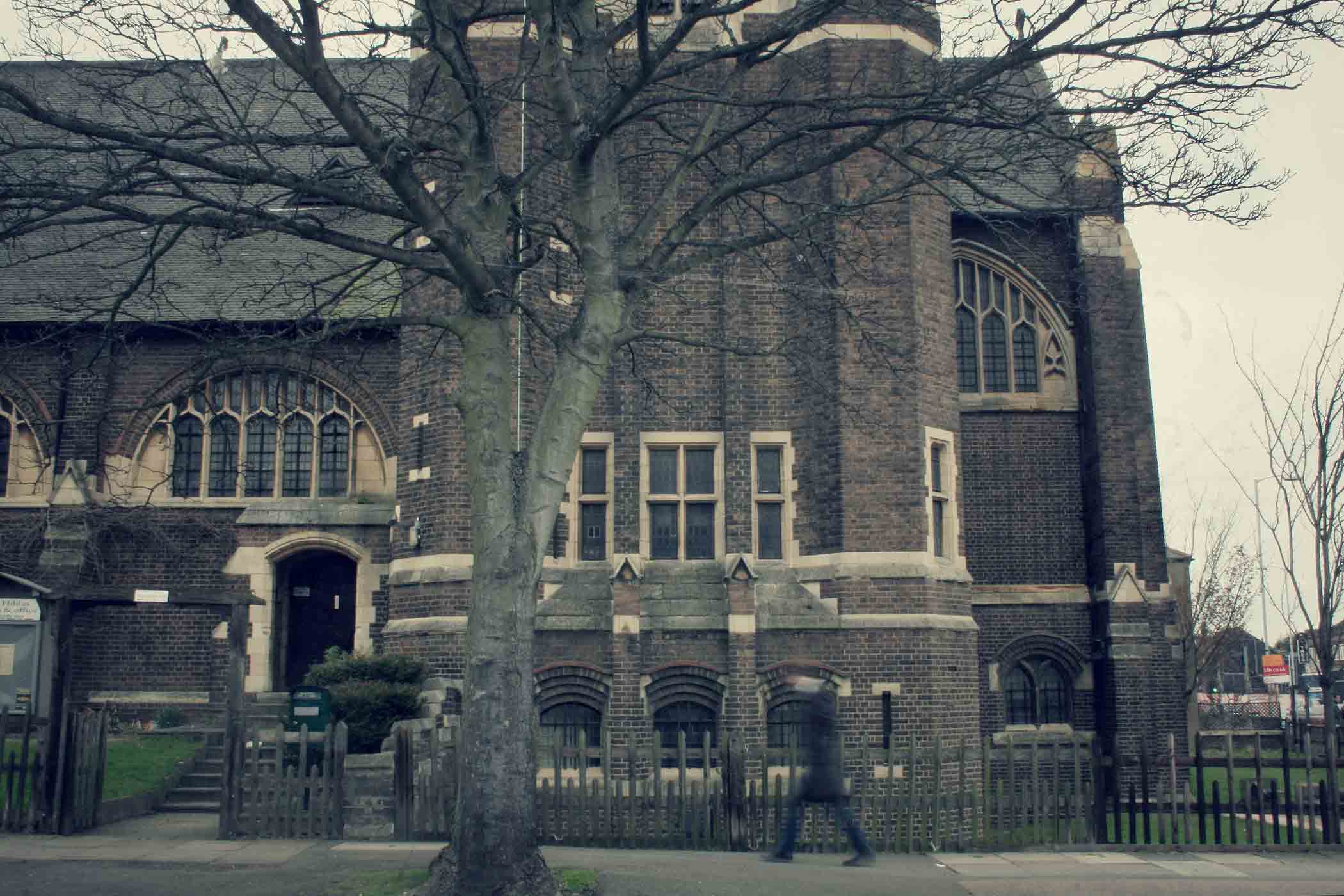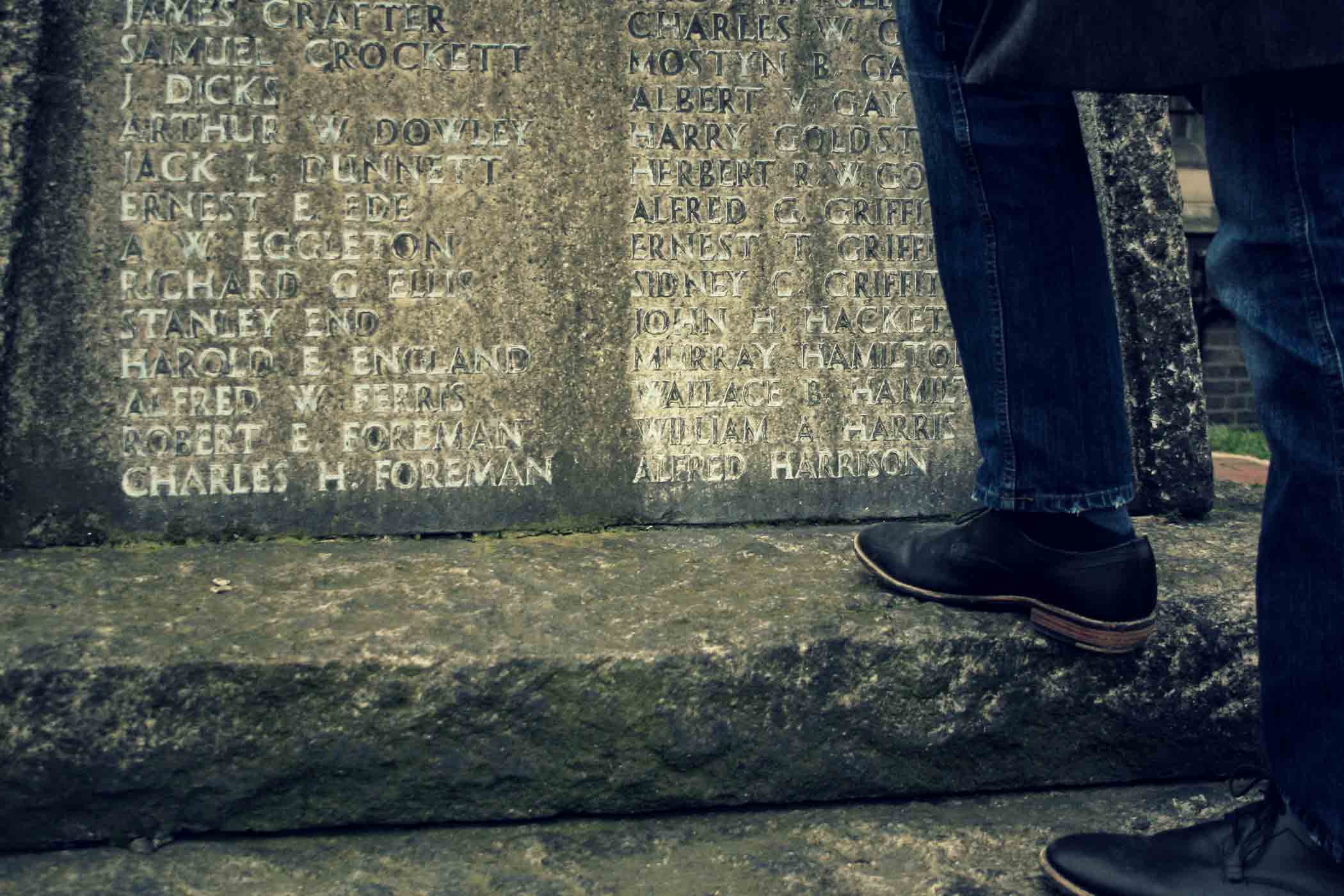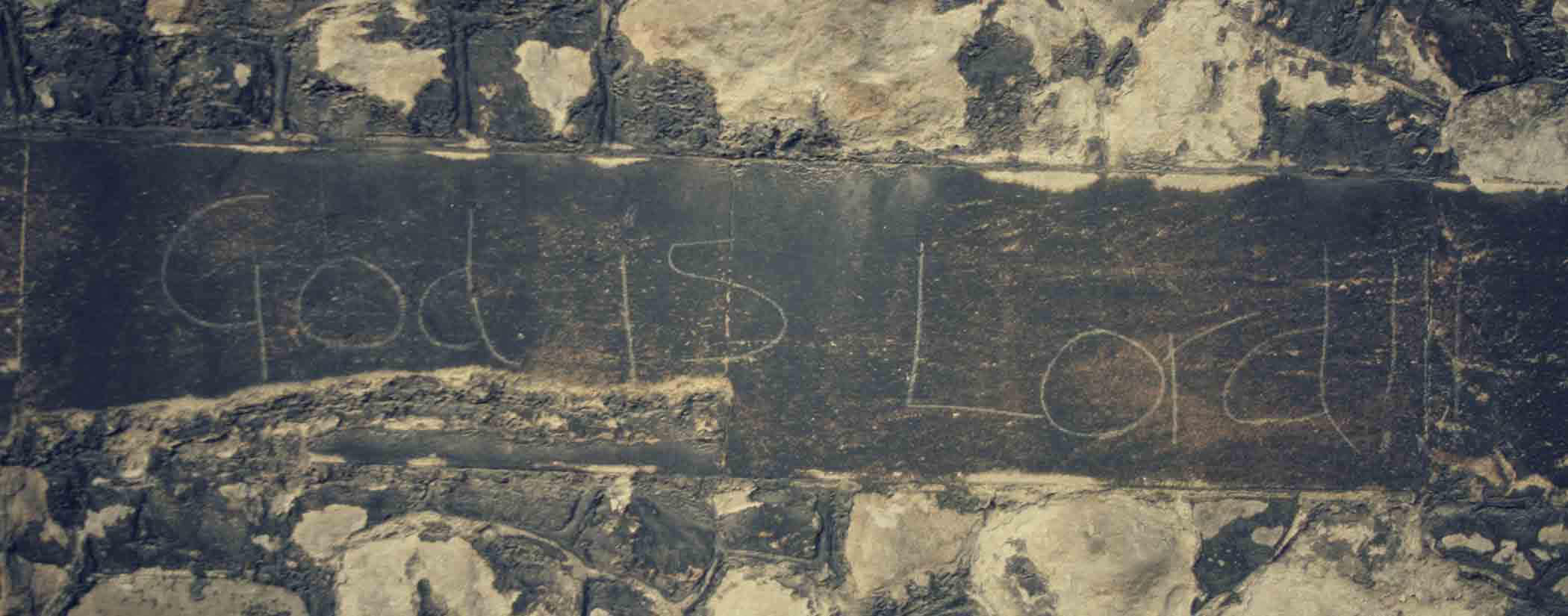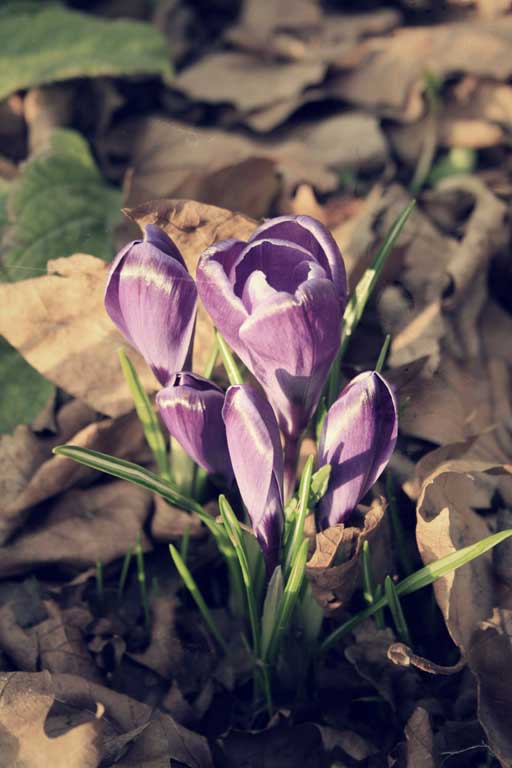I am sitting in a clearing at the summit of One Tree Hill in south-east London, having woken hours earlier to soundless dark, and to my usual sense of metaphysical anxiety. Before me, a parting in the trees reveals a city that is flickering into life, emerging from its nightly semi-slumber with a gentle yet relentless momentum that seems to take place both ponderously – at barely perceptible geological increments – and in the flutter of a heart.
Time moves differently here: for a while it seems as if the city will never fully wake – and then suddenly it is there, established. The Shard loses its summit to a sunless sky; distant sirens climb and fall; the trees around me speak; and behind me sits a silent church – sequestered, sapient, serious – as birdsong tumbles from the surrounding branches.
I come to this spot two or three times a week. I love the stillness of the view across London. I love the muddy paths that take you through a landscape that is thick with trees, rich with life, and that sometimes bears the remnants of visits made by others: a notebook left on a bench; arboreal carvings of lingerers and lovers; strands of discarded tinsel glittering in the undergrowth. All of this I love. But most of all I love the church, St Augustine’s, which was only built in 1885 but seems, somehow, to be at the centre of this ancient site, quietly augmenting everything around it, and drawing you – drawing me – towards it.
When the trees are in leaf the church is almost totally hidden from the passers-by who walk the road beneath. When the trees are bare their branches seem to be trying to encompass the entire building, like so many gnarled and giant fingers united in an act of protective ministration. It is a lovely sight, and whatever the season each of my visits here will largely be given over to this church. I will amble around it; I will sit before it; I will loiter near it. And as I do so its arrangements of pale stone, its French-gothic arches and sable windows, exude and induce a sense of calm and reassurance that tempers the anxiety with which I have usually arrived. St Augustine’s really does feel sacred, and takes its place among a number of passions that characterise what is, for an atheist, my markedly religious life. I memorise religious poetry; I wander in the Bible; I read theology; I visit graveyards and churches. Yet for me it is only the last of these activities that offers an apprehension of what it might be to have religious belief; only churches, such as St Augustine’s, that have stood in mute witness to such great accretions of human feeling, that offer the succour one associates most readily with the sacred.
About a mile north of One Tree Hill, by the Stondon Park Road in Brockley, stands a different kind of church. In contradistinction to the blanched and fairy-tale exterior of St Augustine’s, St Hilda’s is dark, brooding, robust, earthbound. Nikolaus Pevsner described it as an example of the architects’ (Greenaway and Newberry) “rather irresponsible Arts and Crafts Gothic”, but to my eye it is almost absurdly sober and puritanically restrained. A rusty brick exterior is relieved only by the occasional splash of white stone, while black recessed doorways speak of an entrance to a nether-world, to a network of dungeons that runs deep behind the apertures and angles of the church’s exterior.
It is a sombre and even solemn building and adding to the solemnity is the monument to the south-east London locals who lost their lives in the Great War: Crafter, Crocket, Dicks, Dowley – somewhere in the region of 130 names, each masking the story of an abbreviated life, each chiselled initial almost unbearably moving. As you sit in the church’s grounds, the noise from the road that passes dies away, and a silence establishes itself – a palpable, powerful, almost eloquent silence that seems radiated by the bricks before you. There is something about the order of their arrangement: a series of busy and seemingly endless tessellations. Individually they are negligible, even twee. Cumulatively they amount to something stoic, immovable, resolute, sublime, and fill the churchgoer with the kind of resolve they articulate themselves. It is a safe place, a noble place, a brave place. It draws the eye downward, it quietens the mind. Things seem manageable here.
St Peter’s, on the other hand, draws the eye up. Planted on Brockley’s Wickham Road, its slender shoulders hold a soaring tower made of a similar stone to that found at St Augustine’s, but the effect here is altogether grander. The front of St Peter’s is teeming with pointed arches, the lowest of which hold doors of psychotic-tomato red (with fittings of severe black iron), while the higher groupings are diversified by beautiful ornamental stonework. Almost everything here militates to bring about a sense of wonder (including the line of multi-coloured beehives that can be found at the building’s rear), so much so that even the more dubious of the slogans (“God is Lord”) that have been scratched on the church walls can be met with equanimity and indulgence. It is a deeply affirmative environment, and, although it is the oldest of the local churches I frequent (it was built between 1866 and 1870), it is also the freshest and the most joyful, inviting a kind of nutritious, musical appreciation of the world.
The final site I visit here is a world all of its own – “entire of itself,” as Satan puts it in Milton’s Paradise Lost. Brockley and Ladywell Cemeteries were opened within a month of one another in 1858, each a part of the initial burst of public cemeteries to have been opened in the Victorian era, and each an example of what the social commentator Samuel Laman Blanchard referred to as beautiful gardens of death. Initially discrete entities divided by a long wall, the two cemeteries were united in 1948, and today occupy some 37 acres of land. They are still in use: enter from Brockley Road, and you may chance upon a handful of fresh graves (each being visited, perhaps, by the cemetery’s tail-less black cat), before one of the overgrown tree-lined avenues or snaking pathways leads you into another realm: a realm strange, rare and beautiful.
There is something enchanted about the world contained within these walls. The graves themselves are various and wonderful: stern obelisks, weeping angels, grand and heavily decorated monuments, small family plots. And, between them all, great flocks of formerly upright slabs, now so many rows of fractured, crooked teeth. Above them the branches of the cemetery’s many trees form intermittent canopies; the ground exhibits the tracks and the byways left by animals; the air is awash with the sound of trees, and charged with the thousand agitations that are the signs of life. Everywhere nature is present, engaged in acts of magisterial assertion in the midst of decay. Here you will encounter masonry claimed by questing tendrils of ivy; there, entire graves are lost to nettles and shrubs.
It is a world that throbs with beauty, pain and solace. So many lives. So much love. And so much love that has been stifled in the grave. Yet walking here, where life and death exist in such poignant proximity, you feel something more than a sense of loss. You feel reassured by the signs all around of lives that have been lived; reassured by the sense that everyday struggles have been endured; reassured by the sheer number of those who, as George Eliot phrased it in Middlemarch, have “lived faithfully a hidden life, and rest in unvisited tombs.” And you feel something more. You feel a deep apprehension of the fathomless continuities of natural life: of the decompositions from which new life-forms will flicker.
